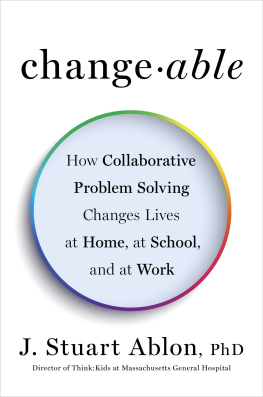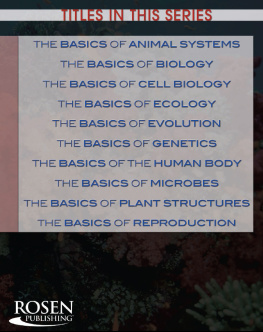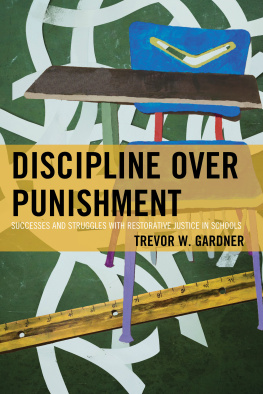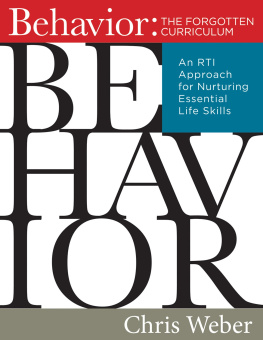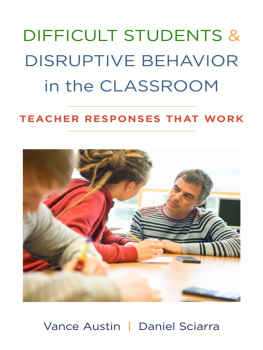Contents
Guide
Page List
THE SCHOOL DISCIPLINE FIX
CHANGING BEHAVIOR USING THE COLLABORATIVE PROBLEM SOLVING APPROACH
J. STUART ABLON & ALISHA R. POLLASTRI

W. W. NORTON & COMPANY
Independent Publishers Since 1923
New York London
A Norton Professional Book
Copyright 2018 by J. Stuart Ablon and Alisha R. Pollastri
All rights reserved
First Edition
For information about permission to reproduce selections from this book, write to Permissions, W. W. Norton & Company, Inc., 500 Fifth Avenue, New York, NY 10110
For information about special discounts for bulk purchases, please contact W. W. Norton Special Sales at specialsales@wwnorton.com or 800-233-4830
Book design by Vicki Fischman
Production manager: Katelyn MacKenzie
ISBN 978-0-393-71230-8 (pbk.)
ISBN 978-0-393-71231-5 (eBook)
W. W. Norton & Company, Inc., 500 Fifth Avenue, New York, N.Y. 10110
www.wwnorton.com
W. W. Norton & Company Ltd., 15 Carlisle Street, London W1D 3BS
CONTENTS
This work is the product of so many contributions from our team members at Think:Kids with lots of support from the Department of Psychiatry at Massachusetts General Hospital. The book has been a long time coming. We hope you are proud of the way it reflects your efforts. Its a privilege to work alongside such a talented and passionate group of collaborators.
Thanks to the team at Norton, especially Carol Collins, who believed in this book from the start.
But the largest thank you most certainly goes to all our colleagues throughout the world who have been courageously using Collaborative Problem Solving to try to transform discipline in their schools despite all the challenges. We are honored to have had the chance to collaborate with so many dedicated, caring, and talented educators who inspire our work. Teachers are the ultimate relationship builders, skill trainers, and problem solvers. Thank you for all you do for our students with social, emotional, and behavioral challenges.
We stand together at one end of the school cafeteria, looking out on the teachers, counselors, and administrators sitting in the chairs that in a few days will be full of this years students. We have done many trainings like this before; the image is a familiar one. Some participants look back at us, eyes bright, ready to hear about our fix for school discipline and consider applying it with the incoming class. Others look more cautious, likely wondering whether this training will result in nothing more than another binder gathering dust on the shelves in the back of the classroom. A few sit in the back looking skeptical that we will say something they dont already know.
We look at each other, smile, and get ready to begin. It is never easy helping schools attempt to transform their disciplinary practices, but were confident that with training, coaching, leadership, and perseverance this school, like others before, will be well on its way to a more compassionate, equitable, and effective approach that will help challenging students build the skills they need to succeed.
Over the last several decades, we have helped countless children and adolescents who exhibit challenging behavior using the Collaborative Problem Solving (CPS) approach. This evidence-based approach was originated by Dr. Ross Greene (1998) in his book The Explosive Child, written for parents of children with social, emotional, and behavioral challenges. CPS was initially developed for parents who wanted to reduce conflict at home because their children were displaying challenging behavior. In an early clinical trial conducted at our institution, Massachusetts General Hospital, with families who came into outpatient clinics, CPS proved to be very effective for this purpose. However, often our clinicians were hearing that some of the most challenging behaviors were occurring in school. How could we help a child struggling at school from our offices?
We began working in schools by providing consultation to teachers and administrators, to help them better understand the children we saw in our offices, and to figure out more effective ways of meeting the students needs. In doing so, we recognized the incredible opportunity that school affords. We realized that students with challenging behavior were spending hours a day with caring, empathic, trained professionals, and CPS could be delivered at a much more consistent dose when educators were using the approach directly with these students, rather than waiting for their weekly hour in our offices. Fortunately, the same approach that worked well with parents and caregivers also provided a blueprint for educators to understand and help students with similar challenges.
Around that same time, some pioneering leaders were beginning to test CPS in their therapeutic systems and organizations, and the data from those early attempts at systemic implementation were promising as well. Since then, CPS has been implemented around the world in hundreds of therapeutic settings with remarkable results that have shifted the entire culture and approach to addressing challenting behavior in many of these programs. Entire organizations, communities, states, and provinces have embraced the approach. More recently, like therapeutic systems, entire schools have been implementing CPS to transform school discipline and effect behavior change in challenging students, and have seen great success.
In the past decade, we have taught CPS in schools of all shapes and sizes, from district schools in New York City and the largest charter school network in the United States to smaller charter networks in cities like Memphis, Tennessee and special education and therapeutic schools all over North America. All told, we train more than 12,000 educators a year in CPS. The evidence has confirmed that CPS can be used to transform traditional school discipline to a much more differentiated, compassionate, and effective approach for some of our most challenging students. The approach has helped achieve significant reductions in challenging behaviors as well as in the punitive responses like office referrals, detentions, and suspensions that do nothing to help, and may actually harm, students. The secondary benefits have included reductions in teachers stress and improved problem-solving skills in students.
The educators with whom we have been fortunate to work have long urged us to develop some sort of curriculum; a guide to help them apply the approach and share it with others in their building. They reminded us that they are experts at implementing curricula in individualized ways with their students, and assured that with a guide like this, they would be able to spread the message of CPS wider and faster. It is our hope that the three parts of this book together provide just such a practical resource.
Part One begins with an examination of why traditional school discipline fails the students to whom its most applied. We explain why the conventional understanding of challenging behavior is inaccurate and leads to ineffective solutions. We then use the research in the neurosciences to help explain what is actually getting in the way for students in a language we can all understand. We use this research to help educators rethink challenging behavior as a deficit of


